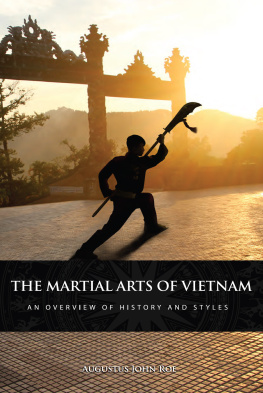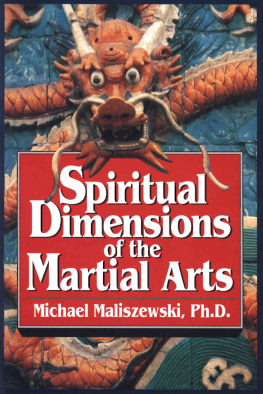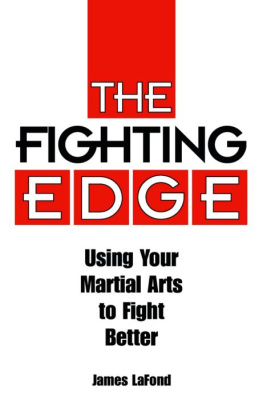Contents
Each Sparkling Strand:
Honoring the Self as Teache...
Ishin Den Shin
(from my soul to your soul)
Martial Arts Teachers on Teaching
Kindle Edition
Bold Visions, LLC
Copyright 1995, 2016 Carol A. Wiley. Copyrights of individual pieces by their respective authors. No portion of this book, except for brief review, may be reproduced in any form without the written permission of Carol A. Wiley or the author of a piece.
Originally published in trade paperback in 1995 as issue #53 in the Io series by Frog Ltd. / North Atlantic Books. ISBN 1-883319-09-9.
Cover photos by Schuyler Pescada (Patricia Hendricks) and Warren Sokolis (Janet Gee). Cover design by Paula Morrison.
PASSAGE #65 from TAO TE CHING by STEPHEN MITCHELL. Copyright 1988 by Stephen Mitchell. Reprinted by permission of HarperCollins Publishers, Inc.
Excerpt from THE PROPHET by Kahlil Gibran Copyright 1923 by Kahlil Gibran and renewed 1951 by Administrators C.T.A. of Kahlil Gibran Estate and Mary G. Gibran. Reprinted by permission of Alfred A. Knopf, Inc.
Excerpts from THE TAO OF POWER by R.L. Wing. Reprinted by permission of Doubleday, a division of Bantam Doubleday Dell Publishing Group.
Excerpts from I CHING WORKBOOK by R.L. Wing. Reprinted by permission of Doubleday, a division of Bantam Doubleday Dell Publishing Group.
This book is dedicated to all of my teachers.
Introduction (1995)
by
Carol A. Wiley
"The task of a good teacher is to set a path on which the average student obviously most students may become creative, limited only by his or her will and perseverance to succeed."
Lester Ingber, Karate Kinematics And Dynamics , 1981, p. 5.
A competent teacher presents information. A great teacher inspires. The difference is a wide chasm over which teachers must work diligently to leap. A great teacher adapts to the needs of students and does not make assumptions, letting students find their own paths. A great teacher is always open and learning, while maintaining the ability to set necessary boundaries.
No one can deny that theres a lot of bad teaching. Teachers impose their belief systems on students; teachers abuse students psychologically, physically, and sexually; teachers set themselves up as gurus to be worshipped. There are also many well-intentioned teachers who simply have not yet developed the skills to be great teachers. While teachers must ultimately discover and develop their own skills, the experiences and views of other teachers can be valuable. Thats where this book comes in.
You will find a mix of philosophical and nuts-and-bolts essays from a wide range of martial arts teachers. These teachers represent seven styles of karate, Tae Kwon Do, Hapkido, Aikido, Naginata-Do, Cuong Nhu, Kajukenbo, Tai Chi Chuan, and two styles of kung fu.
What can a karate teacher learn from an Aikido or Tai Chi teacher, or vice versa? Good teachers have skills that go beyond competence in a particular martial art. Communication skills are essential. The teacher/student relationship is an interpersonal relationship with all the pitfalls of other interpersonal relationships. A bad experience with a teacher may not only push a student away from the martial arts but also damage the persons self-esteem.
Im tempted here to summarize what youll find in this book, but I couldnt possibly do justice to the richness of the material. I learned a lot from reading these essays, and I hope you will too. You probably will not agree with everything. You may even find contradictory statements, illustrating one of the most important points that a teacher can understand: One right way does not exist. Each individual is different, with needs and desires that dictate the best type of teaching and training. One of the greatest services a teacher can do for students is to help them find the appropriate type of training.
Teachers must also explore the fundamental question of What is teaching all about? One of the writers observes that any eight-year-old can point out someone elses mistakes, so thats obviously not what teaching is all about. Several of the writers suggest that love is an important part of teaching. Perhaps the best teaching is about guiding others while letting them find their own way.
About Carol
Carol A. Wiley studied martial arts from 1979 to 1996. She holds second-degree black belts in Aikido and Tae Kwon Do and is also the editor of Women in the Martial Arts . Carol is a freelance writer, and you can contact her at carolwiley.com .
One Instructors Journey
by
James R. Garrison
Then said a teacher, speak to us of teaching.
And he said:
No man can reveal to you aught but that which already lies half asleep in the dawning of your knowledge.
The teacher who walks in the shadow of the temple, among his followers, gives not of his wisdom, but rather of his faith and his lovingness.
If he is indeed wise, he does not bid you enter the house of his wisdom, but rather leads you to the threshold of your own mind.
Kahlil Gibran, The Prophet
Individuals begin the study of martial arts for as many reasons as there are students. Martial artists evolve into teachers of martial arts as a result of a series of circumstances.
My martial arts journey began in 1956, at the age of thirteen. The reason I wanted to start martial arts training was simple: I wanted to be the toughest kid on the block. The early years of my training were consistent with this philosophy. Non-Asian instructors often had a similar philosophy, while Asian instructors were suspicious of non-Asians who wanted to train. The motivation that kept me training past the point of needing to become a better fighter has kept me training for the past thirty-seven years.
When I began the martial arts quest, I viewed training in the same way I viewed life and people. My focus was mostly ego-driven what I wanted and what would make me feel better about myself. As I continued to train, I developed sincere attachments to my instructors and training partners. Because of this maturing attitude, I began to realize the capacity we possess to emotionally grow and develop. This insight came gradually, but was consistently an intense experience.
My move from the state of Washington to Portland, Oregon to train with a very special martial arts instructor not only opened many avenues for my training but also increased my understanding of the true nature of martial arts training. Training in Portland, I obtained work as a consultant with law enforcement and security agencies. I was able to develop self-confidence by giving countless demonstrations and talks on the aiki principles in personal development. When it was time to go to Vietnam I obtained letters of introduction, because of my instructor, to the most prestigious training halls in Asia. My understanding of true martial arts training became clearer as I was exposed to instructors who lived a life of awareness and compassion.
Thirty-seven years later, two tours in Vietnam, many excursions to Asia, and a deep relationship with three martial arts instructors have brought me to the place where I am now in my life. I never intended to become a martial arts instructor; nor did I particularly want to become one. I have evolved from a recalcitrant adolescent and young man to an individual who at fifty is beginning to fully appreciate the meaning of spiritual and physical coordination intrinsic to the essence of martial arts training.
If the spirit of humility, an intrinsic element of Bushido, is removed from the teaching of classical martial studies, the lack of this important virtue makes such studies mere systems of violence.
Nitobe, The Sword and the Deity
After much encouragement from my instructors, I opened my own martial arts program twenty-five years ago. The years of being owner and operator of a martial arts program have taught me many things. The most important is that martial arts training has endured for reasons other than peoples need for fighting skills. With the advent of modern weaponry, fighting skills beyond pushing a button or pulling a trigger are virtually unnecessary, especially in the United States and Europe.










